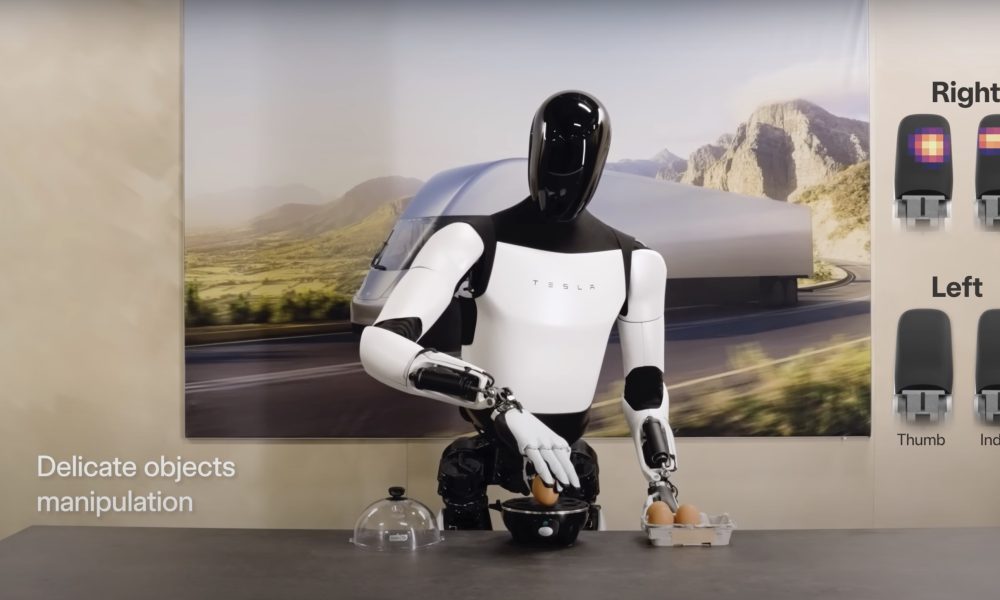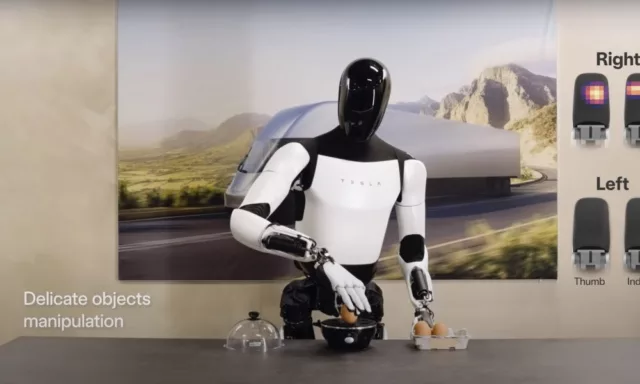
China’s robot industry is heating up as companies prepare to conquer the final frontier in humanoid robot development. The Tesla Optimus bot team is working to do the same on the other side of the world. Which humanoid robot developer will come out on top?
Dexterous hands are said to be the last frontier in humanoid robot development. Robotic hands have become essential to humanoid robots taking on human workloads. As such, companies are increasingly focused on developing the most dexterous robotic hands.
Linkerbot Technology recently debuted its Linker hand for humanoid robots. The Chinese company claims its Linker Hand has the highest dexterity on the market.
“Our Linker Hand research version has the world’s highest 42 degrees of freedom (DOF), surpassing the 26 of the world’s leading product, Shadow Hand. Each finger could independently have up to 7 DOF, which means it has surpassed human fingers. It is also equipped with an advanced multi-sensor system, including cameras and electronic skin,” said Gao Gang, Deputy General Manager of Linkerbot Technology at the 27th China Beijing International High-tech Expo (CHITEC).
Last year, Elon Musk shared that Tesla’s new Optimus hand would have 22 degrees of freedom. In May 2024, Tesla released a new video of Optimus in the company’s facilities. The Tesla video featured Optimus performing several tasks in a factory, including those requiring precision. In a comment about the Optimus video, NVIDIA Sr. Research Manager & Lead of Embodied AI (GEAR Lab), Jim Fan, noted that Optimus’ hands are among the best in the industry.
It would be interesting to see Tesla’s improvements on the Optimus hand. The video from last year already showed Optimus handling delicate tasks, which would improve its functionality in factories. Linkbot expects to showcase the capabilities of its own dexterous robotic hand in the future as well.
“In years to come, Linkerbot aims to deploy 1 million humanoid robots equipped with dexterous hands in the real world to collect data. Including, but not limited to, playing with a Rubik’s Cube. Putting on makeup is included in our fine motor standardized test scenarios,” noted Gao.
Linkerbot isn’t the only Chinese company developing humanoid robots. A few companies in China are creating robots that can work in factories.
Tesla Optimus is expected to perform menial, monotonous, repetitive tasks that could harm humans. PaXini Tech, another Chinese company, is also planning to release a humanoid robot to perform work tasks. Similar to Linkbot, PaXini Tech emphasized its humanoid robot’s dexterous hands and its capabilities.
“Our DexH13 GEN2 is the first four-finger bionic dexterous hand in the domestic market that integrates multi-dimensional tactile + AI visual dual-modal capabilities, which can perfectly simulate various complex movements of human hands such as welding, grasping, rotating, and pinching,” said Dr. Xu Jincheng, founder and CEO of PaXini Tech, a leading haptic technology and humanoid robotics company in China.









